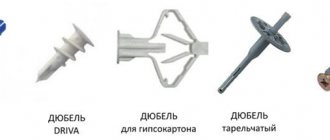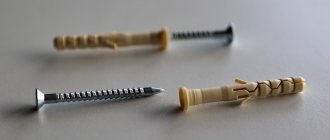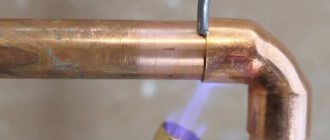To prepare the site for the foundation, it is necessary to thoroughly compact the soil. Usually, special equipment is used for these purposes, but construction technologies do not stand still, and today vibrating legs, which are ideal for private residential construction, are in great demand.
Standard vibrating plates, which have been used since the last century, can only compact the top layers of soil, which is the main disadvantage - a vibrating plate is capable of compacting the lower layers of soil, which is very important when working in hard-to-reach places on a construction site.
Selection rules
Equipment is selected for each specific case, taking into account a number of criteria:
- Compaction area - if the area is no more than 10 square meters. m., then using a vibrating leg would be the most optimal option.
- The type of material that needs to be compacted - the vibrating leg is capable of perfectly compacting concrete, crushed stone, soil, however, this equipment is not suitable for compacting various coatings.
- The depth of the compaction zone - the return stroke of the vibrating leg is up to 600 mm, and about 150 mm near the base.
- Engine type - gasoline drive is light in weight, but when working indoors it is necessary to provide options for the supply of fresh air, which is required by safety standards. The diesel engine does not have this disadvantage, but produces a high level of noise and is heavy.
- Vibration frequency – increased frequency reduces work time, but this negatively affects the durability of the equipment. The optimal frequency is 300-700 vibrations per minute, which is a balance between productivity and operator working conditions.
- Soil composition - with increased humidity of the material being processed, the load on the vibrating leg units increases, so the equipment can only be used when the soil moisture is low.
- Allowable compaction force - usually this parameter varies from 750 to 1300 kg.
Have you ever worked with a vibrating leg?
Constantly! Didn't have a chance
What are the main points to consider when choosing
Vibratory rammers should be selected separately for each case, taking into account the following factors:
- Engine's type.
- Gasoline 2-stroke. Can only be used on Wacker Neuson vibrating feet, because... It was this company that developed a special modification with two tanks: one for oil and the second for gasoline. A special mechanism produces the ideal mixture and delivers it to the combustion chamber. This engine is smaller and lighter than a 4-stroke engine, which makes it possible to compact the vertical walls of a pit and quickly maneuver in very limited spaces. The resource is higher than that of a 4-stroke. The number of revolutions is also higher, which allows a higher maximum number of blows to be achieved for this type of equipment, and therefore increases productivity.
- Gasoline 4-stroke. This is the easiest motor to operate, which is widely used due to its low cost. Leading manufacturers use only motors with oil overflow protection, because... The vibroleg can fall, and it is more convenient to transport it on its side, but it cannot be used in a horizontal position. To further reduce the cost, Chinese manufacturers are using conventional 4-stroke gasoline engines, and here it is important to remember that such engines operate and are stored at a maximum slope of 20 degrees, otherwise overfilled oil will not allow the engine to operate.
- Diesel. They are installed on the heaviest and most productive models, because... They are more powerful, have a significant service life and low fuel consumption compared to gasoline ones. The economic benefits of operating such a vibrating leg become obvious after 500-700 hours of operation.
- Electric. The main indicators for choosing such a model include requirements for maximum price or requirements for the absence of toxic exhaust (work in an enclosed space or in a deep but narrow trench). The required engine power of 2-3 kW forces the installation of models operating on a 220 or 380 Volt network. Naturally, operator protection is provided by the RCD, and work in the rain is excluded.
- Weight and compaction force.
The weight range of all vibrating legs ranges from 60 to 90 kg. There are individual models weighing 30-45 kg. The greater the weight, the greater the impact force, which ranges from 10-23 kN. - Impact frequency and height.
Depends on engine speed and factory settings. Some Chinese manufacturers indicate that these indicators can be adjusted, but since the compaction is performed at a fixed number of revolutions, which the engine manufacturer has set as working, there is no real adjustment. Impact height or shoe travel, as well as impact frequency, affect performance.
Choosing the best vibrating leg for tamping: features and rules for choosing a tool
To prepare the site for the foundation, it is necessary to thoroughly compact the soil.
Usually, special equipment is used for these purposes, but construction technologies do not stand still, and today vibrating legs, which are ideal for private residential construction, are in great demand. Standard vibrating plates, which have been used since the last century, can only compact the top layers of soil, which is the main disadvantage - a vibrating plate is capable of compacting the lower layers of soil, which is very important when working in hard-to-reach places on a construction site.
Principle of operation
The rotational motion of the drive motor is converted into reciprocating motion through a centrifugal clutch, single-stage spur gear and crank mechanism. Power is transferred to the compaction system and creates an impact force to compact the soil. Thanks to the tilt of the vibratory rammer, its forward movement is ensured. The control handle is separated from the tamping system by rubber elements. This reduces the transmission of vibration to the operator. The corrugated tube protects the impact mechanism from dust and dirt, and the enhanced filtration system protects the motor.
What does the profile market offer?
The leading manufacturers of vibrolegs are the brands Masalta (Japan), Biedronka (Poland), Scheppach (Germany). In the latter case, an innovative vibration damping system is provided, as a result of which all the vibration of the cam-eccentric mechanism is not transmitted to the handles. Other manufacturers limited themselves to only using vibration damping materials on the handles. The price of these products is from 60 thousand rubles. up to 120 thousand rubles, depending on the performance and power of the vibrating leg.
Gas generator for home with auto start. Price and device
Looping machine. Renewing old parquet
Advantages
The vibrating leg is used both as an independent equipment and as an additional tool.
The main advantages include:
- Light weight and large compaction depth - the small area of the slab allows you to create vibrations with high amplitude.
- Operation in unfavorable conditions and hard-to-reach places.
- Compact size and good maneuverability.
Depending on the type of drive (petrol, electric, diesel), the equipment can be supplemented with various characteristics, which also affect the characteristics of operation in different conditions.
Best models
Vibratory rammer Hyundai HTR 140
It compacts both hard soil and loose coatings efficiently. The impact force is 14 kilonewtons at a frequency of 680 beats per minute. A high-quality engine will not let you down even in the most difficult operating conditions. The overhead valve cylinder system does not require much effort when starting the engine. All bridles and elements are mounted on a thick frame, which has spring shock absorbers, which can significantly dampen vibration during operation. The frame and compaction plate are made of durable steel, because these elements experience enormous loads during operation.
Masalta EMR70H
A small, but at the same time high-performance vibrating leg, equipped with an original Honda engine. High-quality components allow the equipment to operate in conditions of increased dust and humidity, while these factors do not in any way affect the reliability and durability of the device.
AGT CV 65 H
The best option for use in the construction industry, as well as for road repairs. The engine does not have such high power as other models, so the weight of the device is not so large - 10 kg. A compact vibrating leg that is ideal for residents of country houses and dachas - with the help of this tool you can arrange your local area, prepare a site for the foundation of a bathhouse and other various buildings.
Centaur VT95
It is produced in Ukraine, so the cost of such a tool is significantly lower than that of European competitors. The low cost is also explained by the fact that the impact force is only 12 kilonewtons, while the vibration frequency is 270 beats per minute, which is also not impressive. Despite its mediocre characteristics, this model can be recommended for excavation work, as well as for compacting bulk materials and small ditches.
Biedronka UW7814K
The tool is manufactured in Poland and has a Japanese Honda GX160 engine, which has minimal fuel consumption. The drive has good cooling, so it does not heat up even under heavy overload conditions. If there is insufficient lubrication, the engine automatically switches off, which avoids damage to the vibrating leg due to poor maintenance.
If necessary, the device can be moved to a height using the transport hook included in the kit. This model is designed specifically for large-scale construction work - compaction of asphalt, concrete and tiles occurs quite quickly, which reduces labor costs.











